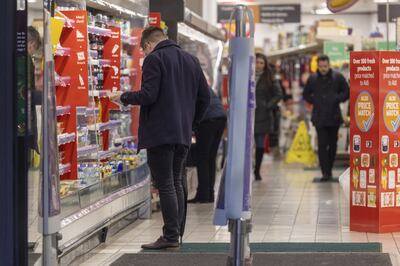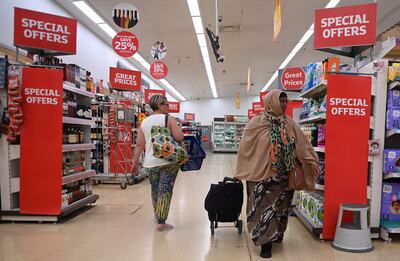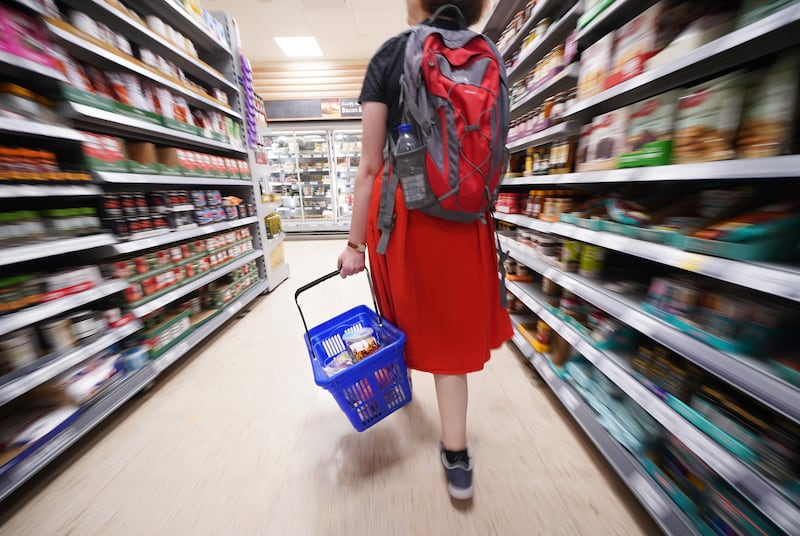It has been a week of festive cheer for Britain's supermarkets as the big players released their Christmas trading figures.
In late November and early December, many retailers warned that Christmas could be a disaster but the dire predictions turned out to be unfounded, especially for those in the grocery sector.
After two festive seasons of pandemic restrictions, consumers were prepared to splash out a bit more, particularly on groceries.
Combined with food inflation in the UK well above the overall inflation figure of 10.7 per cent, that boosted the amount of cash going into supermarket tills.
Tesco, the UK's largest supermarket chain, on Thursday said like-for-like sales in the six weeks to January 7 were 7.9 per cent higher compared to the same period in 2021.
Tesco, which has a 27.5 per cent share of the supermarket sector, recorded particularly strong growth, 8.1 per cent, in sales of fresh food.
"I'm really pleased with our performance over this period — particularly the further strong growth at Christmas on top of the exceptional growth of the last few years," said Ken Murphy, chief executive of Tesco.
Richard Hunter, head of markets at Interactive Investor, told The National that Tesco was "comfortably ahead of its rivals" in terms of market share and that a "Christmas bonanza finished off what was a strong quarter for the company".

Sainsbury's, which has a 15.5 per cent share of the UK grocery market, said its total retail sales in the 16 weeks to January 7, rose 5.2 per cent, reflecting inflation and "relatively resilient volume trends".
Grocery sales rose 5.6 per cent, while general merchandise sales increased by a better-than-expected 4.6 per cent.
"Investment in value, innovation, service and product availability delivered stronger volume trends across grocery and general merchandise, particularly at Christmas," said Sainsbury's chief executive, Simon Roberts.
Customers of Marks & Spencer (M&S) also splashed out on the premium retailer's food offerings at Christmas, with like-for-like sales up 6.3 per cent across its food halls in the 13 weeks to December 31. Added to this, M&S registered £80 million ($97.43 million) flowing into its tills in only one day (December 23).
Clothing and homeware sales rose 8.6 per cent, which gave M&S its largest market share for eight years.
International sales grew 12.5 per cent, boost by strong performances at its key franchises in the Middle East.
Is the party over?
While the supermarkets enjoy that their Christmas trading periods were better than many had expected, they and sector analysts are under no illusions that the festive party is now well and truly over. But that has not stopped an air of cautious optimism.
"We go into the new calendar year with good momentum and I am confident we can continue to maintain our competitiveness and deliver a strong performance relative to the market despite the challenging conditions ahead," Mr Murphy said.
As British consumers start to deal with their Christmas credit card bills, the reality of the cost of living has come crashing back, with inflation and energy costs unlikely to dramatically reduce any time soon.
Belts may have been slightly relaxed for the festive period, by they will now start to be seriously tightened and the major supermarkets will have to fight for every penny, as customers seek the best deals on essential items.
"The news from Tesco and Marks & Spencer adds to what has been something of a Christmas bonanza as consumers decided to enjoy the festive season, presumably in anticipation of a tougher year ahead," Mr Hunter said.
"The likes of Next, Sainsbury's and JD Sports all reported strong trading over the period, although there is little doubt that the deteriorating economic environment in the UK will very much keep up the pressure over the coming months."
Price war escalation
The first casualty of a tightened belt is customer loyalty. Consumers are now shopping around for the best prices and retailers can no longer rely on customers returning just because they always have, which means price competition between the supermarkets remains key.
For some time, British supermarkets have been cutting costs where they could and using the proceeds to keep a lid on prices, rather than passing rises on to their customers.

Sainsbury's is on track to spend £550 million over the two years to the end of March to discourage shoppers from switching to discounters Aldi and Lidl, which also recorded bumper Christmas sales figures.
John Moore, senior investment manager at RBC Brewin Dolphin, said Sainsbury’s was reasonably well-placed "in terms of the balance of its business offering and still has levers to pull in property and further cost and efficiency savings, giving it the opportunity to keep pace with competitors and reinvest in product pricing".
Tesco has benefited from a scheme to match Aldi prices on more than 600 products and made efforts to keep customers by offering discounts to those with loyalty cards. It also announced an extension to its "price-lock" promise, which aims to freeze the cost of 1,000 items until April.
Supermarkets are acutely aware of the difference between sales figures driven by inflation and those pushed higher by volumes.
Kantar, the retail data and consultancy firm, recently said inflation was the real driving force behind sales over the Christmas period, rather than an increase in buying.
"For example, value sales of mince pies soared by 19 per cent, but volume purchases barely increased at all," Kantar said. "Christmas puddings were popular, growing by 16 per cent in value and 6 per cent in volume terms."







